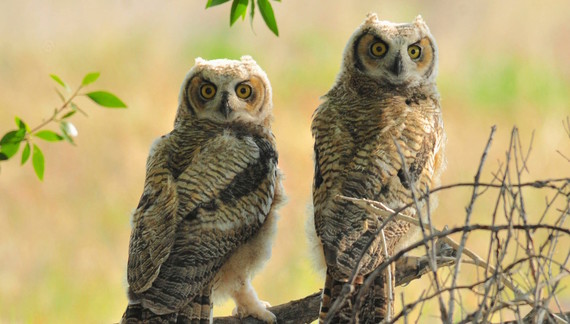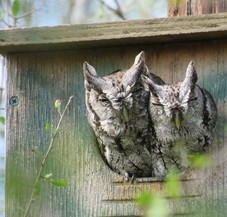
Great horned owl fledglings
If you've never seen an owl in your backyard, that doesn't mean one isn't there. Most owls are nocturnal, so they're tough to spot. We have 17 species of owls in Texas, and some, like the Eastern screech owl and great horned owl, are found across the state, including in suburbs and cities. Try these tips to spot owls:
1. Listen for owl calls at night.
2. Keep an eye on bird baths and other water sources at night.
3. Scan large trees with binoculars during the day, a flashlight at night.
4. Watch for owls in winter, when trees are bare.
5. Install an owl nest box (see story below).
On Halloween night, join Texas Nature Trackers biologists as they try to strike up a conversation with wild owls in a Facebook Live event, Halloween Hootenanny. It's also a full moon night – just right for an owl prowl!
The more you know about owl habits, the better your chance of seeing them. Discover more about our nocturnal neighbors in the Texas Parks & Wildlife magazine story, Whooo Gives a Hoot?

Having owls around your house is a good thing, because they eat rats, roaches and mice. Here are two ways to encourage owls to live on your property:
1. Install an owl nest box. You can buy or make one – try a screech owl box to start.
2. Some owls nest in dead tree cavities or broken-off trunks. Dead trees are important to wildlife in general, so don't cut them down if they aren't a safety hazard, and an owl or two may move in! Watch our short video of a great horned owl and its chick to see how they made a trunk a home.
Not all owls live in trees – our burrowing owl makes its home underground. Watch the video All About Burrowing Owls to find out more about these unique birds.
|
|